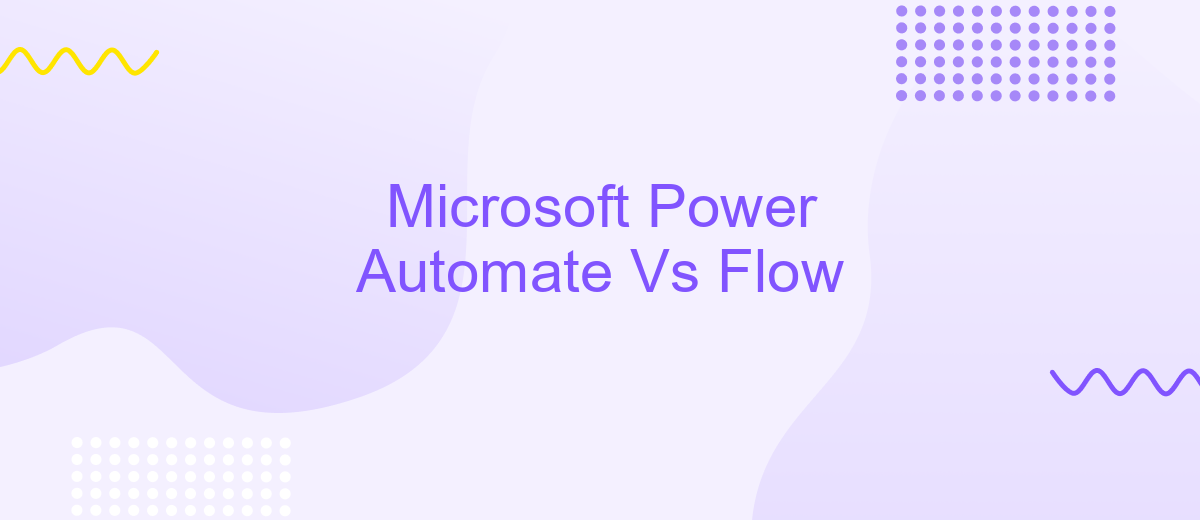Microsoft Power Automate Vs Flow
In the realm of workflow automation, Microsoft Power Automate and Flow stand out as powerful tools designed to streamline business processes and enhance productivity. While both platforms offer robust capabilities, understanding their key differences and unique features is crucial for organizations aiming to optimize their operations. This article delves into a detailed comparison of Microsoft Power Automate and Flow to help you make an informed choice.
Introduction
In today's fast-paced business environment, workflow automation tools have become essential for improving efficiency and productivity. Among the popular options available, Microsoft Power Automate and Flow stand out as powerful solutions for automating repetitive tasks and streamlining business processes.
- Microsoft Power Automate: A versatile tool that allows users to create automated workflows between various applications and services.
- Flow: A service that enables users to automate workflows and connect different applications seamlessly.
Choosing the right tool for your business can be challenging, as both offer unique features and capabilities. Additionally, integrating these tools with other services, such as ApiX-Drive, can further enhance their functionality by enabling seamless data transfer and synchronization between multiple platforms. This article will delve into the key differences and advantages of Microsoft Power Automate and Flow, helping you make an informed decision for your automation needs.
Features and Capabilities

Microsoft Power Automate offers a robust set of features designed to automate workflows between various applications and services. It supports a wide range of connectors, allowing users to seamlessly integrate with Microsoft products like Office 365, SharePoint, and Dynamics 365, as well as third-party services such as Salesforce, Google Drive, and Twitter. The platform provides an intuitive, drag-and-drop interface that simplifies the creation of automated workflows, making it accessible for both technical and non-technical users. Additionally, Power Automate includes advanced capabilities like AI Builder and process analytics, enabling users to create intelligent workflows that can predict outcomes and provide actionable insights.
Flow, on the other hand, is often seen as a more streamlined version of Power Automate, focusing on simplicity and ease of use. It also supports integration with a variety of applications and services but may not offer the same depth of features as Power Automate. For those looking to enhance their integration capabilities further, services like ApiX-Drive can be invaluable. ApiX-Drive specializes in connecting various software applications, allowing users to automate data transfer and streamline business processes without needing extensive technical knowledge. This makes it an excellent complement to both Power Automate and Flow, enhancing their integration capabilities and overall efficiency.
Pricing and Licensing

When comparing Microsoft Power Automate and Flow, understanding the pricing and licensing structure is crucial. Both platforms offer various plans to cater to different business needs, providing flexibility and scalability. Microsoft Power Automate offers a per-user plan starting at per user per month, and a per-flow plan starting at 0 per flow per month. Flow, on the other hand, provides a more straightforward pricing model, often included in Office 365 and Dynamics 365 subscriptions, making it an attractive option for existing Microsoft users.
- Microsoft Power Automate Per-user plan: per user/month
- Microsoft Power Automate Per-flow plan: 0 per flow/month
- Flow: Included in Office 365 and Dynamics 365 subscriptions
Additionally, for businesses looking to integrate multiple applications seamlessly, services like ApiX-Drive can be invaluable. ApiX-Drive simplifies the process of connecting various software solutions, ensuring smooth data flow and automation across platforms. This can enhance the functionality of both Power Automate and Flow, providing a more robust automation solution.
Use Cases and Success Stories

Microsoft Power Automate and Flow have revolutionized the way businesses automate their workflows and processes. These tools offer a wide range of use cases, from simple task automation to complex business process management. Companies across various industries have leveraged these platforms to enhance efficiency, reduce manual effort, and improve overall productivity.
For instance, a healthcare provider used Power Automate to streamline patient intake processes, resulting in faster service and improved patient satisfaction. Another success story comes from a financial firm that automated its compliance reporting, reducing errors and saving countless hours of manual work.
- A retail company automated inventory management, reducing stockouts and overstock situations.
- An educational institution used Flow to manage student registrations and communications efficiently.
- A marketing agency integrated ApiX-Drive with Power Automate to seamlessly connect various marketing tools, enhancing campaign performance and reporting.
These examples highlight the versatility and power of Microsoft Power Automate and Flow. By automating repetitive tasks and integrating disparate systems, businesses can focus on strategic initiatives and drive growth. The success stories demonstrate the tangible benefits and transformative impact these tools can have across different sectors.
Future Development and Roadmap
As we look towards the future of Microsoft Power Automate and Flow, continuous advancements in AI and machine learning are expected to play a significant role. Microsoft is likely to integrate more intelligent automation features, enabling users to create more complex workflows with minimal effort. Enhanced data analytics and reporting capabilities will also be a focus, providing users with deeper insights into their automated processes and overall efficiency.
Moreover, the roadmap includes expanding integration options with third-party services and applications. Platforms like ApiX-Drive will be crucial, as they offer seamless integration solutions that simplify connecting various tools and services. This will enable users to create more cohesive and comprehensive automation ecosystems. As the demand for automation grows, Microsoft will continue to invest in user-friendly interfaces and robust security measures, ensuring that Power Automate and Flow remain at the forefront of business automation solutions.
FAQ
What is the primary difference between Microsoft Power Automate and Microsoft Flow?
Can I use Microsoft Power Automate to integrate with third-party applications?
Is there a way to automate tasks without writing code in Microsoft Power Automate?
What are some alternatives to Microsoft Power Automate for automation and integration?
Can I use Microsoft Power Automate for both personal and business purposes?
Do you want to achieve your goals in business, career and life faster and better? Do it with ApiX-Drive – a tool that will remove a significant part of the routine from workflows and free up additional time to achieve your goals. Test the capabilities of Apix-Drive for free – see for yourself the effectiveness of the tool.

